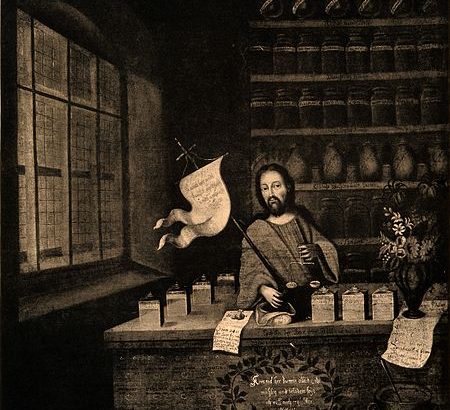Notebook
What strange times we’re in! Because of the coronavirus (Covid-19) pandemic, many of the institutions that make up our daily landscape are now lying quiet: churches, banks, GAA clubs, offices and schools.
But at the same time another social institution is bustling and draws nearly all our attention: the hospital. In these times we cheer on the work of healthcare workers and we pray for them. We get daily updates on the work of those fighting the virus. And as we become increasingly aware of the fragility of our bodies, we grow increasingly grateful for the self-sacrificing work of doctors, nurses, and all hospital workers.
All of this has got me thinking about the close relationship between our Christian Faith and the practice of medicine.
The foundation, of course, is Jesus himself. Last Friday we contemplated Jesus suffering and dying. We saw him beaten, and bleeding, and suffocating. For all believing Christians, this moving experience arouses our compassion for this man of sorrows. We want to relieve his pain, to console him, to befriend him in his isolation.
This same Jesus identifies the sick as his brothers and sisters, and teaches us that when Christians care for the sick, they are consoling Christ himself: “As you did it to one of these my brethren, you did it to me” (Mt 25:40). Jesus is the primordial sufferer, and Christians honour him when they care for anyone who suffers. This point is most vividly illustrated in a crucifixion scene painted by Matthias Grünewald for a 16th-Century hospital for plague victims: the artist depicts Christ on the cross covered with the very same ulcerous growths as the patients in the hospital.
But we’re in the Easter season now, we’re celebrating the resurrection of Jesus, so we recall that Jesus isn’t just the man of sorrows who shares our pain: he’s the conqueror of death, the healer of the sick, the giver of life, the ‘physician’ we all desperately need (Mk 2:17).
When a Christian reaches out to the sick, then, she’s not only honouring the presence of Christ in the sick person, she’s also allowing Christ the healer to work through her. And when we applaud healthcare workers, we see in their life-saving work echoes of the life-saving work of Christ in his death and resurrection. Honouring this truth, Christian artists have even dared to represent the risen Christ as a pharmacist, with a store full of medicine for all our ills.
Plague victims
Christ suffered and Christ gives life: it’s no surprise, then, that followers of Christ have, from the beginning, been especially devoted to the sick. Christian nursing of plague victims in the Roman world stunned pagan contemporaries. St Basil of Caesarea, the great fourth-century bishop, built an enormous hospital (combined with a guesthouse and training centre), which again drew the wonder of contemporaries. And in the Christian Middle Ages hospitals and hospices were omnipresent: in medieval Ireland there were well over a 100 such establishments, run by Knights Hospitaller, friars, sisters, monks and laypeople, from Kilmainham to Spiddal, from Youghal to Carrickfergus.
In modern times, too, missionaries have built hospitals as they preached the Gospel. Even the main hospital in Wuhan, which dealt with the Covid-19 outbreak there, was set up and run by Canossian sisters from Italy.
And in recent weeks, social media has been overflowing with images of Catholic priests and religious bravely carrying out their work as nurses, doctors, and chaplains in the face of this epidemic. They, of course, are only a tiny number compared to the countless lay Catholics motivated by the love of Christ to work in healthcare.
Christians didn’t invent medical care but, with our eyes on our crucified and risen Lord, it has always been our second nature to love, heal and honour the sick. Long may this legacy flourish!
***
Living through a pandemic is new for all of us, but it’s not new for humanity. It’s consoling to remember that we’ve been here before. In the margins of one 14th-Century Irish-language manuscript, for example, we find two deeply moving notes written by a young scribe from east Galway, communicating fear, faith and gratitude:
“1,350 years from the birth of Christ to this night and this is the second year since the coming of the plague to Ireland. I have written this in the 20th year of my age. I am Aed mac Conchubair Mac Aodhagáin and whoever reads it let him offer a prayer for my soul. This is Christmas night. On this night I place myself under the protection of the King of Heaven and Earth, beseeching that he will bring me and my friends safe through this plague and restore us once more to joy and gladness. Amen”.
“A year ago this night since I wrote these lines on the margin below and may I by God’s will reach the anniversary of this night many times. Amen”.


 Christ as apothecary
Christ as apothecary 